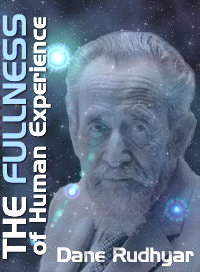 |
| Home | Bio | Art | Music | Literature | Civilization & Culture | Philosophy of Wholeness | Theosophy & Spirituality | Astrology |

CHAPTER NINE
The "Dangerous Forties" in the Life-Cycle of Humanity - 3 The Hindu stages of life According to the traditional Hindu doctrines, the full natural life-span of a human being is normally divisible into four stages (ashrama): brahmacharya, grihastha, vanaprastha, and sannyasa. During the first stage, the child and adolescent develops his or her innate capacities as a member of homo sapiens and of a particular culture, family, and social class. This brahmacharya process is twofold: generic-biological and cultural-mental. It ends when the human being, having "come of age," marries and devotes all that he or she has built to the perpetuation of the sociocultural and religious order according to the function that his or her birth-situation has determined — the person's individual share in the karma of humanity. During the second stage, grihastha, the mature being and the spiritual identity behind the physical embodiment are drawn into a series of organized productive activities, biological and sociocultural. These in most cases entangle the person in a web of desires and commitments — in sexual satisfaction, emotional attachments or repulsions, nurturing and educational activities, and a variety of "business" operations whose central motive is the accumulation of profit. That the drive for profit operates at all levels, even those generally assumed to be spiritual, is a fact many aspirants to "higher" stages of being often ignore. During this second life-stage kama (the power of binding generic and collective desires) dominates the consciousness. The transition from this "householder" (grihastha) stage, intent on productivity and profit at whatever level it might be, to the third stage (vanaprastha) constitutes the basic "change of life." It implies a radical reversal of the polarization of consciousness, a change from extroversion to introversion, and a reorientation of the desires, motives, and essential character of one's activities. The timing of the change has been given as when a man can see the face of his newborn grandchild. In societies where marriages are usually early, this could mean the beginning of the forties. The grandfather is then expected to enter into a new kind of relationship predicated, at least in many cases, on leaving the family home, giving the direction of his business to his son, and retiring to the forest surrounding the village or town.(1) This third stage of life is called the "forest-dweller"; but the term leads to a misunderstanding. While the forest-dweller may have given up his family home and his personal business or occupation to live in retirement in the simplest possible way, he is also able to participate in a non-personal manner in the affairs of the entire community. He may become part of the Council of Elders, or serve in whatever capacity his personal life has trained him for. He serves the Whole of which he sees himself a part, but without remuneration. He has given up the profit motive and (theoretically or gradually) the personal ambition motive. Thus the traditional keynote of this third life-stage has been "sacrifice." However, we have to understand that any action totally dedicated to the service of a greater Whole without any desire for profit has a sacred character. It is consecrated. The process of consecration should result from an internal or introverted experience of the reality of the life and power of that greater Whole. It normally requires that the structure and purpose of the tradition on which the operation of the Whole is based be studied and understood in terms of principles. These may be symbolized in religious, theological allegories (as in the Hindu puranas), or presented in their more abstract, metaphysical forms. Such a consecrated activity which no desire for profit incites and sustains is transpersonal. It is activity through a person but "in the name of" a Whole of which the person not only knows himself or herself to be a functioning part, but has proven to others his ability to perform that function. A fourth life-stage may begin when even that condition of existence and level of consciousness are transcended. This is the state in which the sannyasi lives, moving over the land, beyond any attachment to any particular community, focusing wherever he or she goes what, for the traditional Hindu mind, is the light and love of the Supreme Being. Quite evidently, such a stage was, and is even more today, reserved for but a few rare human beings, women or men. In other cultures, such beings were said to have reached the Age of Wisdom which, in principle, was often related to the years after sixty. When one deals with what is historically possible today for humanity as a whole, the transition toward such a fourth life-stage has to be considered a remote ideal. It refers to what H.P. Blavatsky evoked for a far distant future as "a humanity of Christs and Buddhas." Sri Aurobindo spoke of such an all-human stage as a "Gnostic humanity." Yet the situation mankind is now facing may be interpreted as foreshadowing the beginning of a crisis of transition which should eventually lead from the stage of productivity and profit to that of transpersonal service to the "universal Community of Mankind" (Thomas Jefferson's term). Such a transition may be successful, but it need not be. At the present time it certainly is proving difficult and dangerous. To think of it in terms derived from an old social and religious system may not help the situation. The extreme complexity of the interpersonal and international relationships acutely stressing the profit and success motives has brought to a critical, feverish pitch a restless drive for new types of thought and action. These are likely to demand palliatives and to produce antidotes along socially regressive lines. These in turn may incite violent revolutionary activities, adding new discords to a dangerously tense situation. The ancient Hindu approach to the development of personhood and to one of the most basic crises this development may produce in a foreseeable future is certainly not to be considered a workable global solution; yet it could suggest the direction in which a rather unexpected possibility of transformation of the human situation may occur. It is at least a possibility open to individuals who have become aware of what is implied in the concept of "profit." The ability to make a profit from an activity or process one has undertaken is not merely a concept dominating the collective mentality of any self-consciously democratic society, but in most instances it is an ever-present goal and a hoped for daily experience of the purpose of living in such a society. This ability to make a profit occupies a central position in a democratic culture because such a way of life is oriented toward "success," and success is evaluated in terms of increase in material possessions and/or social prestige and credit-worthiness. This in turn implies an individualistic approach to interpersonal relationships, and the attribution of a basic importance to the ego and its development in a family and school environment. 1. ln the ancient Brahmanical system no mention was made of the development of woman according to such a pattern of life-span. Return By permission of Leyla Rudhyar Hill Copyright © 1986 by Leyla Rudhyar Hill All Rights Reserved.  Web design and all data, text and graphics appearing on this site are protected by US and International Copyright and are not to be reproduced, distributed, circulated, offered for sale, or given away, in any form, by any means, electronic or conventional. See Notices for full copyright statement and conditions of use. Web design copyright © 2000-2004 by Michael R. Meyer. All Rights Reserved. |
 |
